
Dental emergencies can happen when you least expect them. Whether it's a sudden toothache, a knocked-out tooth, or a broken filling, the pain and fear of losing a tooth can be overwhelming.
But what exactly is a dental emergency, and how can you handle it effectively?
This ARC Dental Health article will guide you through understanding dental emergencies, what to do in these situations, and how to prevent them.
There are several types of dental emergencies, each requiring specific care. The following sections detail the most common dental emergencies, what to look for, and how to respond.
Extreme tooth pain is one of the most frequent dental complaints. It can range from mild discomfort to excruciating pain, especially when eating or drinking.
A severe toothache often indicates a problem such as an infection or a cavity that has formed and reached the nerve of the tooth. It’s crucial to see a dentist right away to avoid more serious complications like abscesses or tooth loss.
Sudden or lingering sensitivity, especially to hot or cold foods and drinks, can signal a deeper issue, such as tooth decay, a cracked tooth, or gum recession. It might not seem like an emergency initially, but if the pain persists or worsens, seek dental care.
Teeth can break or chip due to accidents, biting into hard objects, or cavities weakening the structure. This is a dental emergency that requires prompt treatment to prevent further damage.
Tooth fractures can occur from trauma, decay, or even chewing on something too hard. It’s important to address the situation quickly to avoid infection or further fracture.
If you break or chip a tooth, rinse your mouth with warm water to clean the area, and apply a cold compress to reduce swelling.If the fracture is severe, seek emergency dental care immediately.
A knocked-out tooth, or dental avulsion, can happen due to a fall, sports injury, or accident. While it might seem like a lost cause, you may be able to save the tooth with the right care.
If a tooth gets knocked out, it’s essential to act fast. Hold the tooth by the crown (not the root) and gently rinse it with water if it’s dirty. Place it back into the socket if possible, or keep it moist by storing it in milk or a saline solution until you get to the dentist.
Yes, in some cases, a dentist can reimplant a knocked-out tooth, especially if it’s within an hour of the incident. The quicker you get treatment, the better the chances of saving the tooth.
Dental work like fillings, crowns, or dentures can get damaged or fall out unexpectedly, leading to discomfort and the risk of further damage to your teeth.
If a filling or crown falls out, it’s essential to see your dentist right away. In the meantime, try to avoid eating on that side of your mouth to prevent further irritation.
Broken dentures or bridges can also cause discomfort and make it difficult to eat or speak. Temporary fixes, like using denture adhesive, may help, but seeing your dentist as soon as possible is necessary.
Injuries to your gums or the soft tissues in your mouth can be painful and may lead to infection if not treated properly.
Trauma to the mouth can cause bleeding gums or cuts to the soft tissues. Applying pressure with a clean cloth or gauze can help stop the bleeding, but you should still see a dentist to ensure the injury is properly treated.
If you suffer cuts or abrasions inside your mouth, it’s important to get treated promptly to avoid infections and ensure proper healing.
Infections inside the mouth can cause swelling, pain, and discomfort. Some infections, such as abscesses, can spread and cause serious health issues if not treated promptly.
A dental abscess is an infection that forms at the root of a tooth or in the gums. It can cause severe pain, swelling, and fever. Immediate dental attention is needed to drain the abscess and prevent the infection from spreading.
If you experience fever, swelling, or pus around your teeth or gums, it could be a sign of a serious infection. This requires urgent care to prevent the infection from worsening.
Jaw pain or dislocation can cause discomfort and difficulty moving your jaw. In some cases, this can be related to temporomandibular joint (TMJ) disorders or trauma.
TMJ disorders can lead to jaw pain, clicking, or even difficulty opening and closing your mouth. While not always an emergency, severe pain or jaw lock requires prompt attention.
A dislocated or fractured jaw requires immediate medical attention. Do not try to realign the jaw yourself; instead, seek emergency treatment as soon as possible.
Sometimes, objects can get stuck between your teeth, causing pain and discomfort. While this may not seem like an emergency, it’s important to remove the object to avoid damage to your gums or teeth.
Use dental floss to gently remove the object if possible. If you can’t remove it on your own, visit your dentist to safely extract the object.
It’s not always clear whether your situation constitutes a dental emergency. Here are some signs that you should seek prompt care:
Staying calm and acting quickly is the key to managing a dental emergency effectively. Here’s how to handle the situation:
Take a deep breath, assess the situation, and contact your dentist or an emergency dental service immediately.
Cold compresses can help reduce swelling and numb the pain. Apply a cold pack to the affected area for 15-20 minutes at a time.
You can use over-the-counter pain relievers like ibuprofen to manage the pain until you can see a dentist.
In some cases, such as a broken tooth or lost filling, you can use dental wax or temporary filling material as a short-term fix until your appointment.
While not all dental emergencies can be prevented, there are steps you can take to reduce the risk.
Regular visits to your dentist at ARC Dental Health can catch issues early before they become emergencies.
If you play contact sports, wearing a mouthguard can protect your teeth from injury.
Avoiding hard foods and habits like teeth grinding can help preserve the health of your teeth.
Not all dental emergencies require a visit to the emergency room. Here’s when you should go to the ER versus seeing your dentist.
Severe trauma to the face or head, difficulty breathing, or uncontrollable bleeding should be treated at the ER.
Most dental emergencies, such as toothaches or broken teeth, are best handled by a dentist rather than the ER.
At ARC Dental Health in West Covina, CA, we’re committed to providing you with the best dental care services, even in emergencies. Whether it’s a toothache, a broken tooth, or any other dental concern, we are here to help.
We believe that patient education is key to great dental care, and we treat every patient like family. If you’re looking for a reliable dental partner, visit us at ARC Dental Health!

Dental emergencies can happen at any time, and knowing what to do can make a huge difference. The key to managing a dental emergency is staying calm, acting quickly, and seeking professional care.
By understanding the types of dental emergencies, recognizing the signs, and knowing when to seek help at ARC Dental Health, you can protect your oral health and avoid unnecessary complications.
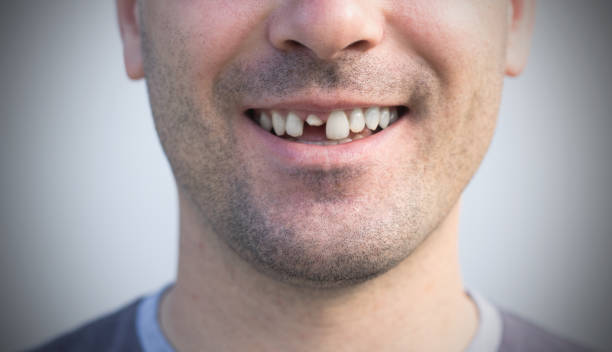
A broken tooth can be as startling as it is inconvenient. Whether caused by a slip on the pavement or an overzealous bite into something crunchy, the experience is never pleasant.
But don’t worry—you’re not alone, and fixing it is entirely possible.
This ARC Dental Health guide will walk you through everything you need to know about fixing a broken tooth, including options such as crowns and veneers, understanding the causes, exploring restorative treatment options and preventing future mishaps.
Understanding what leads to a broken tooth can help you avoid the risk altogether. From sudden accidents to long-term habits, the causes can be surprisingly varied.
A sudden fall, sports injury, or car accident can cause significant dental trauma, resulting in chipped or cracked teeth.
The force from these events can vary, but even a mild collision might lead to damage, depending on the tooth's condition.
Ever chomped down on an unpopped popcorn kernel or chewed ice? These habits, though seemingly harmless, can wreak havoc on your teeth.
Hard candies, bones, and even pens are common culprits. Over time, this stress on your teeth can lead to fractures.
Tooth decay weakens enamel, making it more susceptible to cracks or breaks. Regular check-ups can help catch these issues early, giving your dentist the chance to reinforce weak areas before they become problematic.
Not all broken teeth are the same. The type of break often determines the course of treatment. By understanding these categories, you can better discuss your options with your dentist at ARC Dental Health.
Minor chips are the most common and typically affect the tooth's edges. These may not cause pain but can affect the tooth’s appearance and make it prone to further damage if untreated.
Cracks can extend down into the tooth, sometimes reaching the root. These may cause discomfort, especially when chewing or consuming hot and cold foods. If left untreated, cracks can worsen over time.
Severe fractures involve significant damage, often exposing nerves or dentin. These breaks usually require immediate professional care and may lead to infection if neglected.
What should you do right after a tooth breaks? Act quickly and stay calm. Proper first aid can prevent further complications and ease discomfort until you see a dentist.
Is it a minor chip or a severe fracture? Identifying the extent of the damage helps determine the urgency. Look for signs such as bleeding, sharp edges, or sensitivity to hot and cold temperatures.
Pain can range from mild to severe. Here’s how to handle it effectively.
When it’s time for expert care, several options exist to restore your smile. Your dentist will evaluate the damage and recommend the best course of action tailored to your specific needs.
A tooth-colored resin is applied to repair small chips seamlessly. This non-invasive treatment is quick and restores the natural appearance of the tooth.
Bonding is affordable and effective for minor repairs but may not be durable enough for larger fractures. Regular maintenance may be required.
Crowns are ideal for severe fractures or weakened teeth. They act as a cap, covering the entire tooth to restore its structure and function.
Each type offers unique benefits. Porcelain crowns blend naturally with your teeth, while metal ones provide exceptional durability. Composite crowns offer a balance between cost and appearance.
If the pulp is exposed, this is a sign that a root canal can save the tooth. This treatment removes damaged tissue and seals the tooth to prevent further infection.
A crown is often placed after a root canal to protect and strengthen the tooth, ensuring long-term functionality and aesthetics.
Thin porcelain shells can conceal chips and cracks on front teeth. Veneers provide a polished and natural look, enhancing your smile.
Veneers are a long-lasting solution, often lasting 10-15 years with proper care. They are resistant to staining and maintain their shine for years.
Severely damaged teeth may require removal if they cannot be saved. This option is typically a last resort when the damage compromises the tooth's integrity.
Dental implants, bridges, and dentures provide effective solutions for missing teeth. Each option varies in cost, durability, and maintenance requirements.
Several factors determine the best course of action for repairing a broken tooth. These considerations ensure a tailored approach for every individual.
An ounce of prevention is worth a pound of cure. Simple lifestyle adjustments can go a long way in protecting your teeth.
While accidents can’t always be avoided, many broken teeth result from preventable causes. Wearing a mouthguard during contact sports or night guards for teeth grinding can significantly reduce risks.
Additionally, avoiding habits like chewing on pens or opening bottles with your teeth helps keep them strong and intact.
Delaying treatment for a broken tooth can lead to complications that are harder—and more expensive—to fix. A minor crack might seem harmless at first, but it can deepen over time, potentially exposing the tooth's nerve and causing extreme pain or infection.
At ARC Dental Health in West Covina, CA, we specialize in restoring smiles and confidence. Our experienced team offers personalized care with our many services, whether you need bonding, crowns, or implants.
We believe in patient education and collaboration, treating everyone like family. Ready for the dental care you deserve? Join the ARC Dental Health family today!
Book an appointment or contact us today!
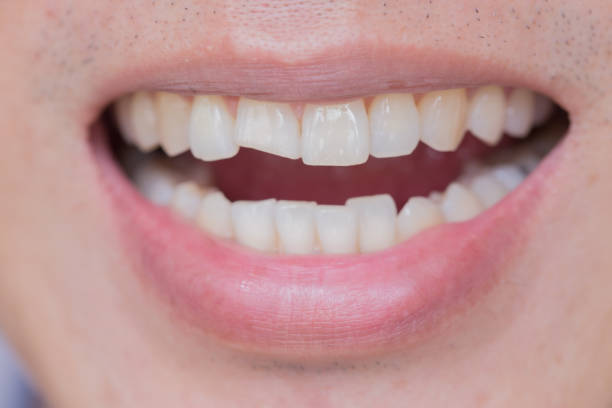
Fixing a broken tooth doesn’t have to be daunting. By understanding the causes, acting quickly, and exploring the right treatments, you can restore your smile with ease.
And remember, for top-notch dental care, ARC Dental Health is here to help!
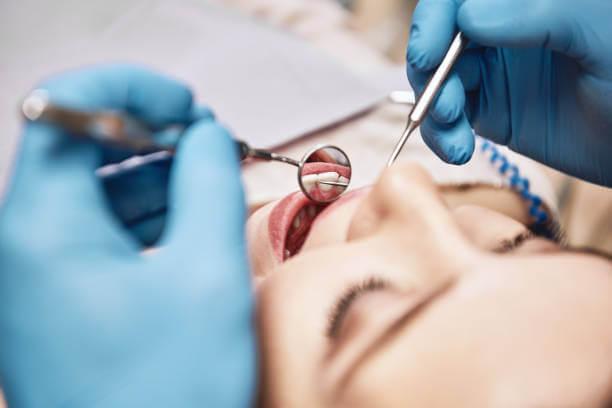
When dental pain strikes, it doesn’t wait for a convenient moment—it barges in like an uninvited guest. Whether it’s a chipped tooth, a painful infection, or a lost crown, knowing what to expect financially can make a tough situation a little easier.
With compassionate care, transparent pricing, and a commitment to your oral health, ARC Dental Health ensures your dental emergency is handled swiftly and effectively.
So, how much does an emergency dentist cost? Let’s dive into the factors, procedures, and solutions so you’re prepared when dental emergencies come knocking.
One of the trickiest things about emergency dental care is the variation in costs. Why does this happen? Several factors come into play.
The type of problem you’re facing can have a significant impact on the cost. Here’s how:
Acting quickly can prevent minor problems from spiraling out of control.
Highly skilled dentists invest years in perfecting their craft. Specialized care, especially for complex procedures, might come with a slightly higher price tag, but the level of precision and peace of mind you gain is invaluable.
Modern dental technology plays a vital role in emergencies. Common diagnostic tools include:
While these add to initial costs, they ensure accurate diagnoses and prevent future complications.
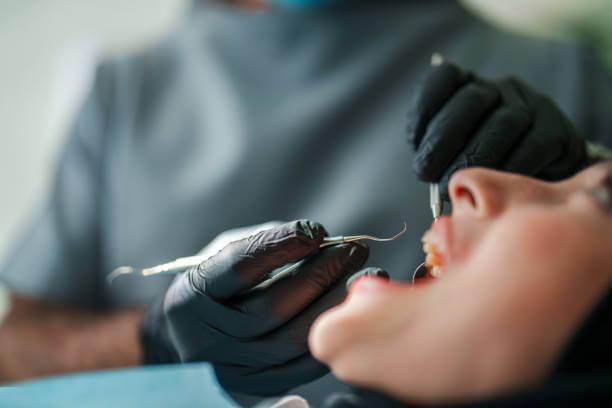
Let’s take a closer look at some common dental emergencies and their associated costs.
Your first step is a thorough exam to identify the issue. Expect to pay $50–$150, depending on the complexity. This typically includes:
Fillings and bonding are quick, effective ways to repair chipped or decayed teeth. Costs range from $100–$400 based on the material:
Bonding uses a resin to repair chips and cracks. It’s often a lifesaver for cosmetic emergencies!
For severe damage, crowns or veneers might be necessary. Crowns are protective caps, while veneers are thin shells that improve appearance. Costs include:
Wondering which is best? At ARC Dental Health, we can help guide you to the most suitable option.
Dental abscesses are painful, and they’re dangerous if untreated. Draining the abscess costs $200–$500, and antibiotics can add at least another $20–$50.
Early treatment can prevent the infection from spreading, saving you both pain and money.
Waiting to address a dental emergency can make things worse—both for your wallet and your health.
A tiny cavity might cost less to fill, but if left untreated, it can lead to more expensive treatments such as:
Bridges, dentures, or implants are costly fixes. At ARC Dental Health, we emphasize early intervention to save your natural teeth whenever possible.
When it comes to emergency dental care, understanding your insurance coverage can feel like unraveling a mystery. While most dental insurance plans aim to ease the financial burden, they often come with specific limits and exclusions you should be aware of.
Here’s a breakdown of what’s typically covered and what might not make the cut:
The good news is that many insurance providers recognize the importance of addressing dental emergencies promptly. Coverage often includes:
However, there always seems to be a catch when it comes to insurance policies. Many plans have exclusions, especially for procedures that fall under the cosmetic or elective category:
No insurance? ARC Dental Health offers payment plans to spread costs over time. These plans are perfect for handling unexpected expenses without breaking the bank.
Transparent pricing helps you budget effectively. We prioritize clear communication about costs—because surprises are only fun when it’s your birthday, not your dental bill.
Some clinics and programs offer reduced fees for low-income patients. While helpful, they often have long wait times and limited availability, which may not work in emergencies.
For immediate relief:
These solutions are temporary, so don’t skip seeing a professional.
Planning ahead can save you a headache down the road.
Set aside $10–$20 monthly. Over time, this can cushion the financial blow of unexpected emergencies.
Prevention is cheaper than cure. Regular checkups and cleanings help avoid costly problems. At ARC Dental Health, we focus on preventive care to keep your smile healthy and your costs low.
When emergencies happen, you need a dental team you can trust, and that’s exactly what we offer at ARC Dental Health. We understand that dental emergencies are stressful, which is why we prioritize urgent cases to get you the relief you need as quickly as possible.
With us, you won’t encounter hidden fees—our pricing is transparent, and we provide honest, clear estimates from the start. Most importantly, we treat you like family, offering compassionate care and support every step of the way.
Located in West Covina, we proudly serve the local community and nearby areas. From severe toothaches to cracked teeth, our full suite of services ensures you’re covered for any emergency. Don’t wait—visit us today for affordable, compassionate care.
Dental emergencies don’t have to be overwhelming or financially crippling. Acting promptly not only saves money but also protects your oral health. With ARC Dental Health, you’re never alone in managing your dental needs.
Ready to restore your smile and ease your worries? Contact ARC Dental Health now for compassionate, cost-effective emergency care that puts your smile first!
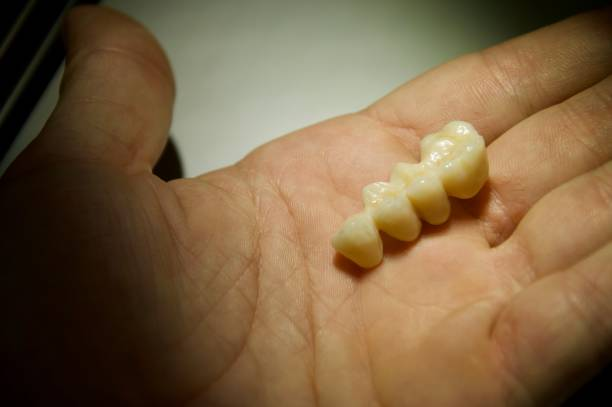
Are you seeking a reliable solution to restore your smile and oral functionality? Dental bridges could be the perfect answer.
This comprehensive ARC Dental Health guide will walk you through everything you need to know about dental bridges—from their types and benefits to their care and associated costs.
Dental bridges have long been a cornerstone of restorative dentistry. These fixed dental prosthetics are designed to replace missing teeth, improving both function and aesthetics.
Dental bridges at ARC Dental Health are prosthetic devices used to fill the gap left by one or more missing teeth. They are anchored to the natural teeth or implants adjacent to the gap.
These supporting teeth, often called abutments, hold the bridge securely in place, allowing the artificial tooth or teeth (called pontics) to function as seamlessly as natural teeth.
Losing teeth can lead to numerous complications, including difficulty chewing, impaired speech, and diminished self-confidence. Moreover, gaps left untreated can cause the neighboring teeth to shift out of alignment, potentially leading to further dental and orthodontic issues.
By replacing missing teeth with dental bridges, you protect the structure of your smile and maintain oral health.
Dental bridges come in various designs, each suited to specific situations.
Traditional bridges are the most common type, comprising a pontic (false tooth or teeth) anchored to adjacent natural teeth (abutments) with dental crowns. This design is best suited for patients with healthy teeth on either side of the missing tooth or teeth.
Cantilever bridges are used when there is only one adjacent tooth available to support the bridge. While less common, they can be a practical solution in certain cases.
Maryland bridges employ a metal or porcelain framework bonded to the lingual surfaces of neighboring teeth. This approach preserves more of the natural tooth structure, making it a conservative dental solution.
Implant-supported bridges are anchored directly to tooth-colored dental implants instead of natural teeth. This provides superior stability and durability, making them an excellent choice for individuals missing multiple teeth.
The material used for a dental bridge significantly affects its durability, aesthetics, and cost.
Porcelain bridges are highly favored for their ability to mimic the appearance of natural teeth. They are especially suitable for front teeth, where aesthetics are a primary concern.
Ceramic bridges are another excellent aesthetic choice. Known for their strength and translucence, they blend beautifully with surrounding teeth.
Metal-alloy bridges are often recommended for molars due to their exceptional strength. While not as visually appealing, they provide reliable durability for chewing forces.
Composite resin bridges are a more affordable option, typically used for temporary restorations. While less durable, they can be a cost-effective short-term solution.
Dental bridges offer a range of advantages beyond just filling a gap.
While dental bridges are a versatile solution, certain factors determine eligibility.
Good candidates for dental bridges typically have one or more missing teeth and strong adjacent teeth or implants to support the bridge.
Conditions such as untreated gum disease or poor oral hygiene may need to be addressed before proceeding with a bridge. A thorough evaluation by a dentist ensures the best outcome.
The process of getting a dental bridge involves several critical steps.
Your dentist at ARC Dental Health will examine your oral health and discuss suitable options. X-rays or impressions may be taken to plan the treatment accurately.
A small amount of enamel is removed from the abutment teeth to create a surface for the crowns, which will anchor the dental bridge in place.
Temporary bridges are placed to protect the prepared teeth while the permanent bridge is crafted.
Once ready, the permanent bridge is cemented or fixed into place. Adjustments are made to ensure a perfect fit and optimal comfort.
Proper care can significantly extend the lifespan of your dental bridges.
Maintain a diligent oral hygiene routine, including regular dental cleaning, brushing twice a day, flossing, and using an interdental brush or water flosser to clean around the bridge.
Hard, sticky, or excessively chewy foods should be avoided to prevent damage to the bridge.
Regular checkups are essential for monitoring the condition of your bridge and addressing any issues early.
The cost of dental bridges can vary depending on multiple factors.
The type of bridge, materials used, and the complexity of the process all influence the overall cost.
Many insurance plans cover a portion of the cost, but the extent of coverage depends on the specific policy.
Many dental practices offer payment plans or financing to make treatment more affordable.
How do dental bridges compare to other restorative options?
While implants last longer and are more permanent, bridges are less invasive and typically more affordable.
Unlike dentures, bridges are fixed in place and offer a more natural feel and appearance.
Though generally safe, dental bridges are not without potential risks.
These may include tooth sensitivity, decay under the bridge, or misfit causing discomfort.
Regular dental visits and proper care can mitigate these risks and address any problems promptly.
At A.R.C. Dental Health in West Covina, CA, patients receive unparalleled care tailored to their unique needs. Our team is dedicated to educating patients, empowering them to care for their teeth, and delivering exceptional treatment.
Whether you need dental bridges or other services, A.R.C. Dental Health treats you like family, ensuring a warm and respectful experience. Searching for a new dental home? Let A.R.C. be your trusted partner in achieving the smile you deserve.
Contact and book online.
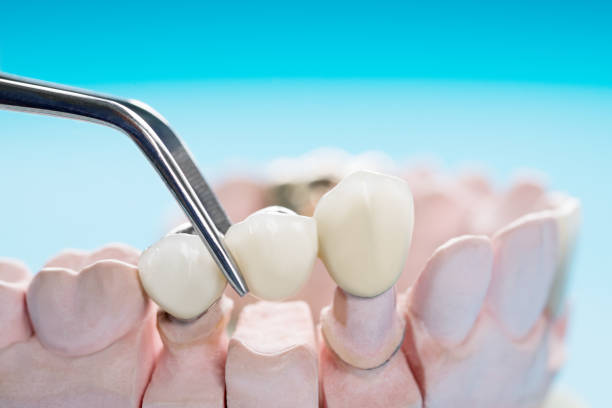
Dental bridges at ARC Dental Health are a reliable and effective solution for restoring missing teeth. They offer numerous benefits, including improved functionality, aesthetics, and oral health.
With proper care, they can last for years, providing a cost-effective alternative to other restorative options.
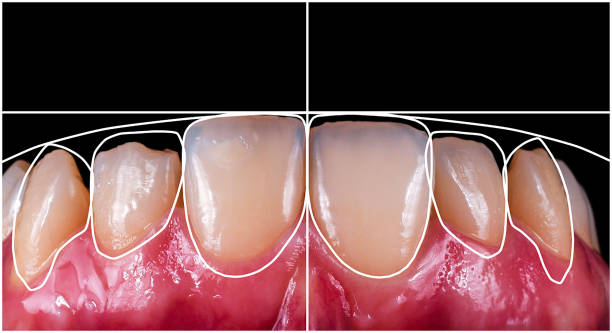
Are you longing for a flawless smile but unsure about dental veneers? This ARC Dental Health guide will help you weigh the advantages and disadvantages of veneers, making it easier to decide if they’re the right fit for you.
Veneers are popular in cosmetic dentistry for their ability to transform smiles—but as with any dental treatment, it’s important to be well-informed before committing.
Veneers are personalized, paper-thin shells made to cover the front portion of your teeth. They can enhance the look of your teeth by altering their color, shape, size, or length.
Composed of sturdy materials like porcelain or composite resin, veneers are permanently attached to your teeth, resulting in a realistic, brilliant smile.
Veneers originated in the 1920s, initially as temporary solutions for Hollywood stars who needed flawless smiles for their roles. Dr. Charles Pincus, the pioneer of veneers, created the first versions, which were held in place temporarily.
Over the decades, advancements in materials and techniques transformed veneers' longevity, and transformative options for patients worldwide.
Dental veneers are primarily made from two materials:
Understanding the different types of veneers helps in choosing the best option based on your goals, budget, and lifestyle.
Porcelain veneers are considered the top-tier option due to their durability and natural aesthetic appeal. They are crafted in a dental lab to match the shape and color of your teeth precisely. Porcelain veneers are ideal for those seeking a long-term solution with minimal maintenance.
Composite resin veneers are a budget-friendly alternative that can be applied in a single visit. They involve layering resin material directly onto the tooth, and then sculpting and polishing it to achieve the desired look.
While effective, they may not last as long as porcelain veneers and are more prone to staining.
Unlike traditional veneers, no-prep veneers require minimal to no enamel removal. They are thinner and designed for those who want a less invasive treatment. However, they may not be suitable for everyone, as they can add bulk to the teeth if not applied correctly.
What makes veneers so popular? Their benefits go beyond cosmetic enhancements.
Veneers at ARC Dental Health can transform discolored, chipped, or misaligned teeth into a perfect smile. Their ability to mimic the natural translucency of teeth ensures a seamless appearance.
Porcelain veneers are incredibly durable, often lasting over a decade with proper care. They resist wear and tear from daily activities like eating and speaking.
Compared to crowns, veneers require less tooth preparation, preserving more of your natural tooth structure. This makes them a less invasive option for smile makeovers.
Porcelain veneers are highly stain-resistant, making them impervious to discoloration from coffee, tea, wine, and other common staining agents, preserving a luminous smile.
Veneers are tailored to fit each individual’s teeth, ensuring a perfect fit and a natural-looking result. From color to shape, every detail is personalized.
While veneers have many advantages, they aren’t without limitations.
Veneers are a significant investment, with porcelain options often costing between $900 and $2,500 per tooth. Composite veneers are more affordable but may not offer the same durability or aesthetic quality.
Once enamel is removed for veneer placement, it cannot be restored. This makes the treatment irreversible, and future replacements are inevitable.
Some patients experience increased sensitivity to hot or cold temperatures after veneer placement. This sensitivity often subsides but can be bothersome initially.
Although durable, veneers are not indestructible. Biting into hard objects or grinding your teeth can cause chipping or breakage.
Veneers require diligent care, including regular brushing, flossing, and dental check-ups. Neglecting oral hygiene can lead to complications like gum disease or discoloration around the veneers.
Not everyone is a perfect candidate for veneers. Understanding whether they’re right for you is essential.
Veneers are suitable for individuals with:
Veneers might not be the best option for those with significant tooth decay, gum disease, or insufficient enamel.
If veneers aren’t suitable, other options like dental bonding, crowns, or teeth whitening may address your concerns effectively.
Getting veneers involves several carefully planned steps to ensure optimal results.
Your dentist at ARC Dental Health will assess your teeth and discuss your goals. They may take X-rays or impressions to plan your treatment.
A thin layer of enamel is removed to make room for the veneers. This step ensures a snug fit and natural appearance.
Temporary veneers are often applied while the permanent ones are being crafted. These protect your teeth and give you a glimpse of the outcome.
Once ready, the veneers are bonded to your teeth using dental cement and a curing light. This step ensures a secure and longer-lasting veneer.
Your dentist will schedule follow-ups to check your veneers' fit and comfort. Any necessary adjustments can be made at this time.
While veneers cover only the front surface of teeth, crowns encase the entire tooth, offering more protection for damaged teeth.
Bonding is a quicker, less expensive option, but it lacks the durability and aesthetic quality of veneers.
Whitening treatments brighten natural teeth but cannot address structural issues like chips or gaps. Veneers provide a more comprehensive solution.
At A.R.C. Dental Health in West Covina, CA, we’re passionate about helping you achieve your dream smile. Our team provides personalized care with our comprehensive dental services in a welcoming environment.
Whether you’re exploring veneers or other cosmetic treatments, we prioritize patient education, ensuring you’re informed at every step.
Join our dental family and experience friendly, quality care that puts your needs first. Contact and book us today.
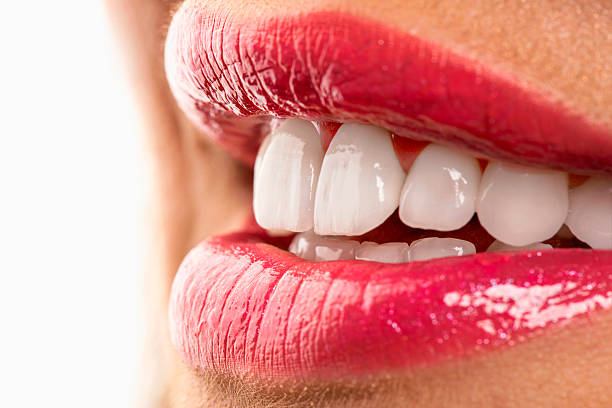
Veneers are a powerful tool for transforming your smile, offering both aesthetic and functional benefits. However, understanding their costs, maintenance, and potential drawbacks is essential.
Consult with a trusted dentist, like the team at A.R.C. Dental Health, to determine if veneers are the perfect choice for your journey to a confident, radiant smile.
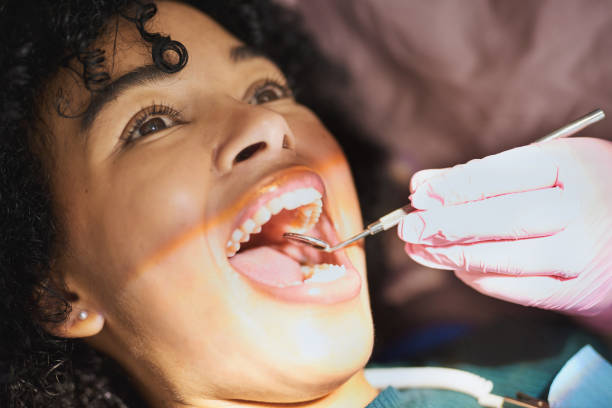
Root canals are a widely misunderstood treatment but are essential for maintaining dental health. They are performed at ARC Dental Health to remove infected tissue and alleviate severe tooth pain while preserving the tooth structure.
A root canal is a dental treatment that treats a tooth with inflamed or infected nerve tissue. It involves cleaning out the infected area, disinfecting it, and sealing the tooth to prevent further infection.
Root canals prevent the spread of infection from a damaged or decaying tooth to surrounding teeth and gum tissue. By treating the problem at its core, root canals protect your oral health and prevent further complications.
Spotting early signs of a root canal can save you from severe discomfort and invasive procedures. Recognizing these symptoms promptly allows for timely treatment that can restore your oral health.
Several symptoms signal the need for a root canal, many of which are hard to ignore. Persistent pain, swelling, and sensitivity are among the most prominent indicators of underlying dental issues.
If you're experiencing constant and extreme tooth pain that never seems to go away, it's a red flag that something is wrong deep within the tooth. Whether it's a sharp or dull ache, this type of pain is one of the most common signs you need a root canal.
Unusual sensitivity to hot or cold foods can indicate that the pulp inside your tooth is inflamed or infected. This kind of sensitivity often doesn’t fade quickly and can linger for several minutes after the stimulus is removed.
Swollen or tender gums near a painful tooth can point to an infection that has spread beyond the tooth. The inflammation often accompanies a deep ache, worsening the longer it’s left untreated.
A visible pus pocket, or abscess, is a sure sign that infection has built up at the base of your tooth. This requires urgent care, as abscesses can cause severe pain and spread the infection to other areas of your body.
To prevent further complications, it's essential to practice good oral hygiene, such as brushing twice a day, flossing regularly, and using mouthwash.
Over-the-counter pain relievers may provide temporary relief, but it's crucial to seek professional dental care as soon as possible and not just rely on self-care.
Teeth that appear darker than usual may signal that the pulp inside has died due to infection or trauma. This discoloration, often a gray or black hue, suggests the tooth’s nerve may be exposed or compromised.
Pain during chewing or when pressure is applied to the tooth is another signal that infection or decay has reached the tooth's inner layers. This discomfort is often caused by inflammation around the root of the tooth.
Abscesses around the tooth can make biting down incredibly painful, often resulting in throbbing or sharp pain. This is a clear indication that the infection needs to be treated with a root canal before it worsens.
A cracked or chipped tooth is more than just a cosmetic issue—it can expose the pulp inside to bacteria, leading to infection. If you notice your tooth has sustained damage, it’s essential to seek dental care before complications arise.
Cracks or chips in a tooth can expose the delicate inner pulp, making it vulnerable to infection. Once exposed, bacteria can infiltrate, leading to inflammation, pain, and potentially the need for a root canal.
While some symptoms are more obvious, there are a few less common signs that shouldn’t be overlooked. These signs, though rare, are still indicators of underlying issues that may necessitate a root canal.
Small pimples or bumps on your gums, known as fistulas, are often a sign of infection. These pimples allow pus to drain from an abscess and are usually a clear indication that a root canal may be necessary.
A loose tooth can suggest that the infection has caused significant damage to the surrounding tissues and bone. When a tooth starts to feel mobile, it’s a sign that immediate dental care is required.
If your gums remain sensitive for an extended period, this could be a sign of infection or inflammation. Prolonged sensitivity can lead to further complications, potentially necessitating a root canal.
Ignoring the signs you need a root canal can lead to serious dental complications. Left untreated, these symptoms may worsen, resulting in more severe infections and tooth loss.
A tooth abscess is a serious consequence of untreated infections, where pus collects at the root of the tooth. This can lead to extreme pain, swelling, and the potential for the infection to spread to other parts of the body.
If a tooth infection is not treated, it can spread to other teeth, gums, and even beyond the mouth. This can lead to serious health issues, including systemic infections that impact your overall health.
Ignoring these signs puts you at risk of losing the affected tooth altogether. In many cases, a root canal can save the tooth, but if left too long, extraction may become the only option.
If you’re noticing any of the signs that you need a root canal, A.R.C. Dental Health is here to help. Located in West Covina, we offer a full range of friendly, professional dental services tailored to meet your needs.
At A.R.C., we believe in educating our patients, empowering them to take control of their oral health. We treat every patient like family—because you deserve the best care. From root canals to routine cleanings, we promise to provide you with a great dental experience.
Searching for a new dental home? Look no further than A.R.C. Dental Health! Schedule an appointment today.
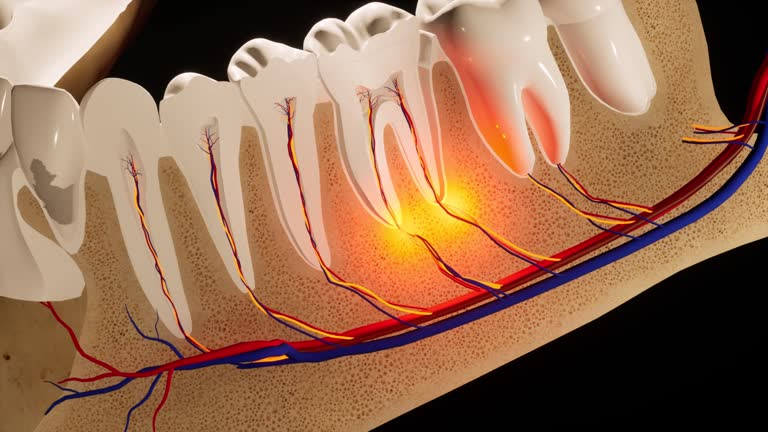
Root canals don’t have to be scary—they’re essential for saving your teeth and preserving your smile. By recognizing the signs early and seeking professional care from your dentist, you can avoid more severe complications.
If you think you may need a root canal, don’t wait... reach out to your dentist at ARC Dental Health today!

When it comes to achieving that picture-perfect smile, there are many dental treatments to choose from. Two of the most popular options? Bonding and dental veneers.
Both offer a solution for cracked, chipped, or discolored teeth—but which one is right for you?
Let’s dive into the world of dental bonding and veneers, exploring their differences, similarities, and everything in between. Whether you're looking for a quick fix or a long-term solution, this ARC. Dental Health guide will help you make an informed choice.
Dental bonding involves applying a tooth-colored resin material to the tooth's surface. It's molded to fit the tooth perfectly and is hardened with a special light, effectively "bonding" the material to the tooth.
Veneers are thin, custom-made shells designed to cover the front surface of teeth. They’re made of either composite resin or porcelain and are used to improve the appearance of teeth by changing their color, shape, size, or length.
Both bonding and veneers aim to improve your smile, but they have some distinct differences.
Dental bonding is a procedure that repairs minor cosmetic issues, such as gaps, discoloration, and small chips. It’s ideal for people who need a quick and affordable fix to improve their smile.
Veneers are custom-made shells that cover the front surface of teeth. They are primarily used for more severe cosmetic issues like significant discoloration, large gaps, or substantial wear.
Made from resin, composite veneers are a less expensive option, though they’re not as durable or stain-resistant as porcelain veneers.
Porcelain veneers are highly durable, stain-resistant, and provide the most natural appearance. However, they are more expensive.
A small amount of enamel is removed from the tooth surface to make room for the veneer. This process is more invasive than dental bonding.
After preparation, the dentist takes an impression of the teeth. The custom-made veneer is then bonded to the tooth using a strong adhesive.
The veneer is polished for a natural, glossy finish that matches your other teeth.
If you're looking for a quick fix for minor imperfections, bonding may be the right choice. Veneers are not permanent but may be better for long-lasting, dramatic improvements.
Bonding is more affordable upfront, while veneers come with a higher cost but provide long-term value.
Minor chips or cracks may only require bonding. Veneers may offer a more durable solution for more severe discoloration or damage.
Veneers may be better suited to resist staining if you drink a lot of coffee or red wine.
Bonded teeth require regular brushing and flossing. Be mindful of foods and drinks that can stain, such as coffee and tea.
Although veneers are more stain-resistant, it’s still important to maintain good oral hygiene.
Whether you choose bonding or veneers, regular dental visits are essential for maintaining the health and appearance of your teeth.
At A.R.C. Dental Health in West Covina, CA, we specialize in both bonding and veneers to help you achieve the smile you deserve. Our team believes in educating patients about their options so you can make the best choice for your dental health.
With friendly and professional dental services, we promise to treat you like family. Whether you're considering bonding or veneers, we strive to make sure you have the best possible experience during your journey to a better smile.
If you’re looking for a dental home, we would be honored to serve you! Book us today.
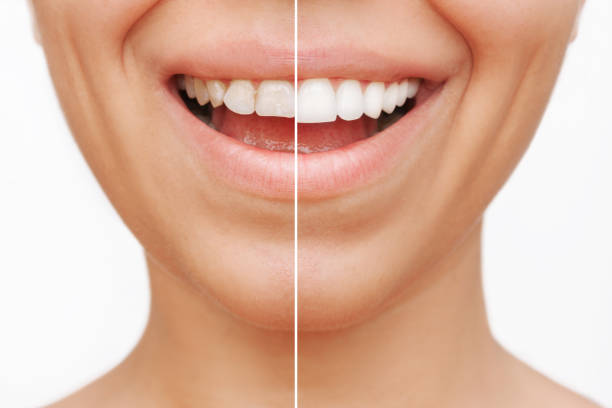
When it comes to bonding vs. veneers, the best choice depends on your needs, budget, and desired outcome. Bonding is quick, affordable, and ideal for minor fixes, while veneers offer a long-lasting, natural-looking solution for more significant cosmetic issues. Remember that A.R.C. Dental Health offers both top-notch services.
Whatever you choose, maintaining proper care and regular checkups will keep your smile looking its best. Call A.R.C. Dental Health today.
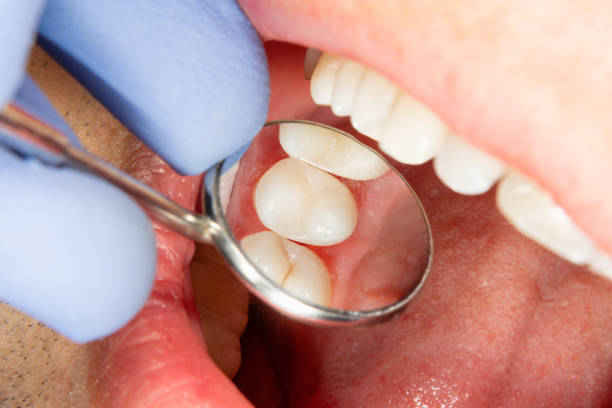
Have you ever felt self-conscious about your smile due to unsightly silver fillings? The modern world of dentistry offers a more aesthetically pleasing solution: tooth-colored fillings. These restorations blend seamlessly with your natural teeth and provide a durable and long-lasting repair.
In this comprehensive ARC Dental Health guide, we will explore tooth-colored fillings, their benefits, the treatment process, and more. By the end, you will have a clear understanding of whether tooth-colored fillings are the right choice for you.
Tooth-colored or composite fillings are a popular dental restoration option that offers a natural alternative to traditional silver fillings. These fillings are made from a mixture of resin and glass particles, allowing them to match your teeth' color and shade.
Tooth-colored fillings are a dental restoration used to repair damaged teeth or painful cavities. They are composed of a composite material that is shaped, hardened, and polished to match the natural appearance of your teeth.
There are two main types of tooth-colored fillings:
Compared to traditional silver fillings, tooth-colored fillings offer several advantages:
The process of getting a tooth-colored filling involves several steps:
Proper care and maintenance are essential for the longevity of tooth-colored fillings:
The cost of tooth-colored fillings can vary depending on several factors:
While tooth-colored fillings may have a higher upfront cost than traditional fillings, they can offer long-term value due to their aesthetic benefits and durability.
While tooth-colored fillings are generally safe, there are a few potential complications:
Tooth-colored fillings can be used for a variety of dental needs:
In addition to tooth-colored fillings, there are other dental restoration options available:
Inlays and onlays are custom-made restorations that fit into the grooves of your teeth. They are often used for larger cavities or significant tooth damage.
Dental crowns are full-coverage restorations that cover a damaged or weakened tooth. They are often used when a tooth has a large cavity or has been severely damaged.
Veneers are thin, custom-made shells bonded to teeth' front surfaces. They are often used for cosmetic purposes, such as improving the appearance of stained, chipped, or misaligned teeth. Veneers usually last for 5-15 years.
Tooth-colored fillings can play a significant role in maintaining overall dental health:
Choosing a qualified dentist is essential for the success of your tooth-colored fillings:
A dentist with experience in placing tooth-colored fillings is more likely to achieve a successful outcome. Ask your dentist about their experience with tooth-colored fillings and their approach to the treatment process.
A.R.C. Dental Health is your go-to destination for exceptional dental care in West Covina, California. Our team of skilled dentists and dental professionals is passionate about helping you achieve a healthy and radiant smile.
From routine check-ups to specialized treatments, we offer comprehensive dental services tailored to your unique needs. We also strive to make dental care accessible by accepting most major insurance plans.
At A.R.C. Dental Health, we prioritize your comfort and well-being. Ready to schedule an appointment? Contact us today, and let us help you achieve the smile you've always dreamed of.
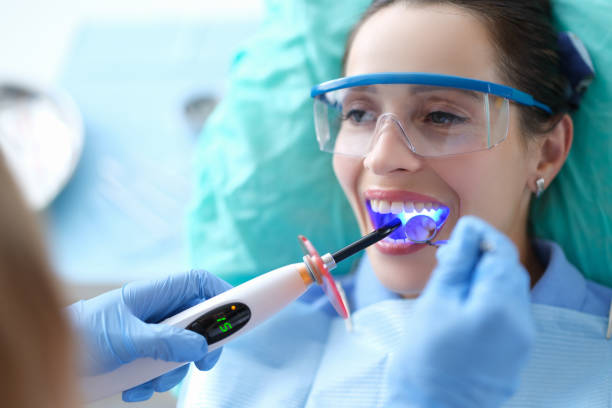
Tooth-colored fillings offer a durable, aesthetically pleasing, and safe option for dental restorations. By understanding the benefits, the treatment process done at ARC Dental Health, and the potential risks, you can make an informed decision about whether tooth-colored fillings are the right choice for you.

Have you ever experienced a jolt of pain in your tooth that seems to come out of nowhere? It could be a sign of an exposed tooth nerve, a dental issue that requires prompt attention.
This ARC Dental Health article explores the causes and symptoms of exposed tooth nerves, as well as treatment options and prevention strategies.
Your teeth are marvels of engineering, designed to withstand a lot of wear and tear. But even the toughest teeth have a vulnerable spot: the pulp. This inner chamber houses the nerves and blood vessels that keep your teeth alive.
Unfortunately, damage to the tooth's outer layers can expose this sensitive pulp, leading to excruciating pain and other complications.
Imagine the pulp as the heart of your tooth. It's a soft tissue in the center, containing nerves, blood vessels, and connective tissue. These components work together to keep your tooth nourished and responsive to sensations like hot and cold.
An exposed tooth nerve or dental pulp occurs when the hard enamel and dentin layers protecting the pulp become compromised. This can happen for various reasons, leaving the sensitive nerve vulnerable to irritants and causing significant discomfort.
Several factors can contribute to an exposed tooth nerve. Here are some of the most common culprits:
An exposed tooth nerve is a painful experience, and the symptoms can be quite telling. Here's what to watch out for:
If you experience any of these symptoms, especially a throbbing toothache or extreme sensitivity, don't hesitate to schedule an appointment with your dentist immediately. Early diagnosis and treatment are crucial to prevent complications.
Leaving an exposed tooth nerve untreated can lead to serious consequences:
Diagnosing an exposed tooth nerve is a straightforward process for your dentist. During your appointment, the dentist will:
The treatment for an exposed tooth nerve depends on the severity of the damage and the condition of the pulp. Here's a breakdown of some common treatment options:
Following any treatment for an exposed tooth nerve, following your dentist's instructions is crucial for a smooth recovery and optimal healing. Here are some general guidelines:
The good news is that exposed tooth nerves are mainly preventable with proper dental care. Here are some key strategies to keep your pearly whites healthy and avoid nerve exposure:
If you experience any of the following symptoms, seeking immediate dental attention at ARC Dental Health is crucial:
At A.R.C. Dental Health, we understand the importance of preventive dentistry and early intervention.
Our skilled dentists and hygienists deliver exceptional dental care at A.R.C. Dental Health. We combine advanced technology with gentle techniques for a comfortable experience. This includes prompt diagnosis and treatment of exposed tooth nerves so you can achieve a healthy smile with minimal discomfort.
Don't wait until you experience a dental emergency. Schedule a consultation with A.R.C. Dental Health today! We can help you achieve and maintain a healthy, beautiful smile for years.

An exposed tooth nerve is a painful dental problem that requires prompt attention. By understanding the causes, symptoms, and treatment options, you can take proactive steps to prevent it and maintain a healthy smile. Early diagnosis and treatment are key to avoiding complications like infection and tooth loss.
Feel free to schedule regular dental checkups and prioritize good oral hygiene practices. If you experience any signs of an exposed tooth nerve, such as sharp pain or extreme sensitivity, contact your dentist immediately at ARC Dental Health for a proper diagnosis and treatment plan.

When we talk about exposed tooth roots, we're addressing more than just a cosmetic issue; we're delving into significant aspects of dental health. Exposed tooth roots can lead to heightened sensitivity and increased oral health risks and highlight the urgency for timely dental intervention.
Maintaining a healthy smile is crucial for aesthetics and overall well-being. This article explores the implications of exposed tooth roots, how they occur, and the steps you can take with the support of ARC Dental to address this issue effectively.
Tooth roots are foundational to dental structure, anchoring teeth securely within the jawbone. They play a critical role in tooth stability and sensory function, transmitting sensations like pressure and extreme tooth pain.
When these roots become exposed, it indicates a breakdown in the protective layers of the teeth, which can lead to various dental problems.
Tooth roots are the hidden supports of your teeth, extending beneath the gums and into the jawbone. They provide stability and sensation to each tooth, acting as a conduit for nerves and blood vessels. Without healthy roots, teeth can become loose and vulnerable to damage.
Situated below the gum line, tooth roots serve several essential functions:
Each tooth is shielded by multiple layers:
Identifying exposed tooth roots involves noticing visual signs and understanding associated symptoms.
Visible roots or a 'long-tooth' appearance are clear indications of exposed tooth roots. This can manifest as a gradual uncovering of the tooth's lower portion, usually due to receding gums.
Common symptoms include heightened sensitivity to hot, cold, or sweet foods and beverages. Additionally, occasional sharp pains may occur when the exposed roots are stimulated by certain stimuli.
Understanding the root causes of tooth root exposure is essential for effective prevention and treatment strategies.
Gum disease ranks among the leading causes of exposed tooth roots. It often results from poor oral hygiene practices or genetic predispositions that make individuals more susceptible to bacterial infections.
Accumulation of plaque, a sticky film of bacteria on teeth, is a primary culprit behind gum disease. Inadequate brushing and flossing habits allow plaque to harden into tartar, further aggravating gum inflammation and eventual recession.
Gum recession exposes tooth roots, a condition typically characterized by the gradual withdrawal of gum tissue from the tooth surface.
Factors such as overly vigorous brushing, especially with hard-bristled brushes, can contribute to gum recession. Additionally, natural aging processes can lead to gum tissue becoming thinner and more susceptible to recession.
Poorly aligned teeth can exert abnormal pressure on gum tissue, potentially causing it to recede over time and expose tooth roots.
Bruxism, or teeth grinding and clenching, can wear down tooth enamel and contribute to gum recession, exposing underlying tooth roots.
Previous orthodontic treatment, such as braces, can impact gum health if not followed by proper retention and maintenance protocols post-treatment.
Changes in hormone levels, particularly during puberty, pregnancy, and menopause, can affect gum health and increase the risk of gum recession and root exposure.
Smoking and tobacco use are detrimental to oral health, causing decreased blood flow to the gums and increasing the likelihood of gum disease, which can lead to root exposure.
Neglecting exposed tooth roots can lead to various complications, negatively impacting oral health and overall well-being.
Early detection and appropriate intervention are crucial for managing exposed tooth roots effectively.
Regular dental check-ups allow for early detection of issues such as gum recession and exposed tooth roots. Early intervention can prevent further damage and promote optimal oral health.
Comprehensive dental examinations and X-rays are essential for assessing the extent of root exposure and planning appropriate treatment strategies. These diagnostic tools enable early detection of potential issues, ensuring timely and effective intervention.
Treatment options vary depending on the severity of root exposure and may include preventive dentistry services like professional dental cleaning (scaling and root planing) to remove plaque and tartar buildup. In more advanced cases, surgical procedures such as gum grafting may be necessary to cover exposed roots and restore gum tissue.
Proactive oral care is key to preventing root exposure and maintaining optimal oral health.
Effectively managing exposed tooth roots involves adopting specific lifestyle changes and targeted dental care.
At ARC Dental Health, we're committed to safeguarding your smile from the risks associated with exposed tooth roots. Serving West Covina, CA, our experienced team is ready to provide comprehensive dental care and personalized treatment plans tailored to your unique dental needs. Whether you're experiencing heightened sensitivity, gum recession, or other oral health concerns, we offer a range of dental services, from professional cleanings to advanced procedures like gum grafting.
Don't wait for discomfort to worsen—schedule your consultation with us today to take the first step toward optimal oral health. Act now to protect your teeth and enjoy a lifetime of confident smiles with ARC Dental Health.
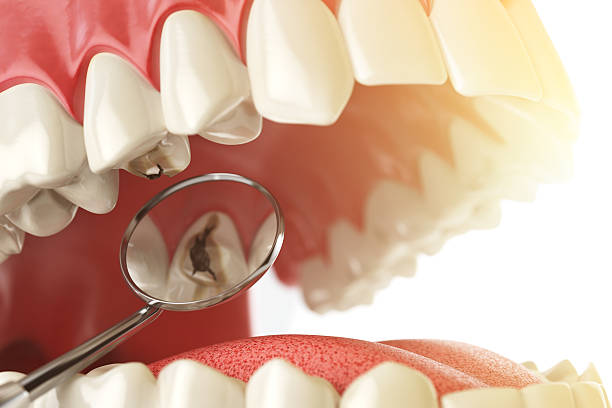
In conclusion, maintaining a healthy smile goes beyond aesthetics; it impacts overall well-being. Early detection and treatment of exposed tooth roots are critical steps in preventing complications such as sensitivity, decay, and eventual tooth loss.
By understanding the causes, symptoms, and preventive measures outlined in this guide, individuals can take proactive steps to safeguard their oral health and enjoy a lifetime of smiles.